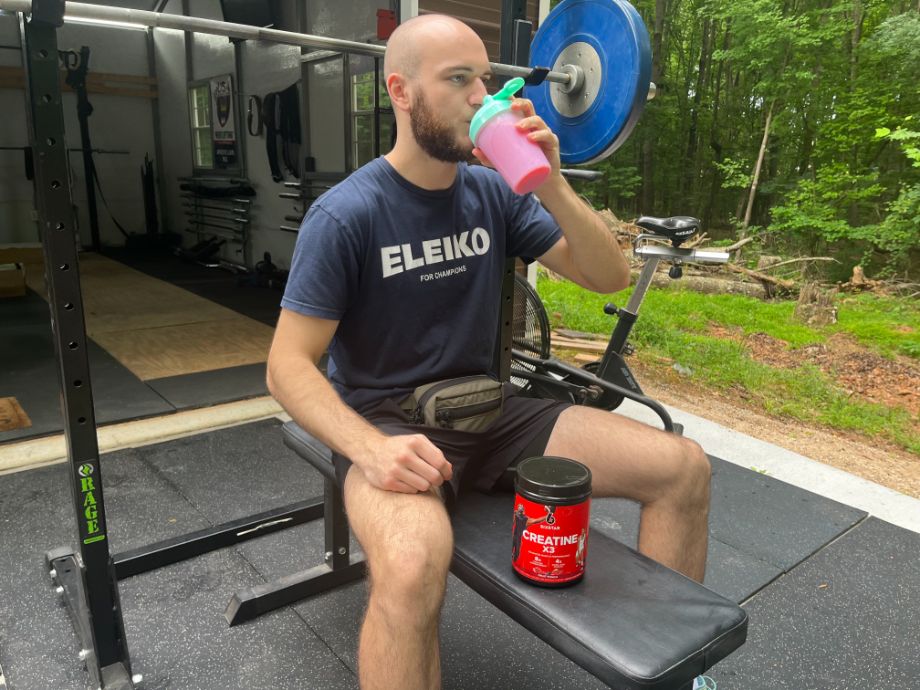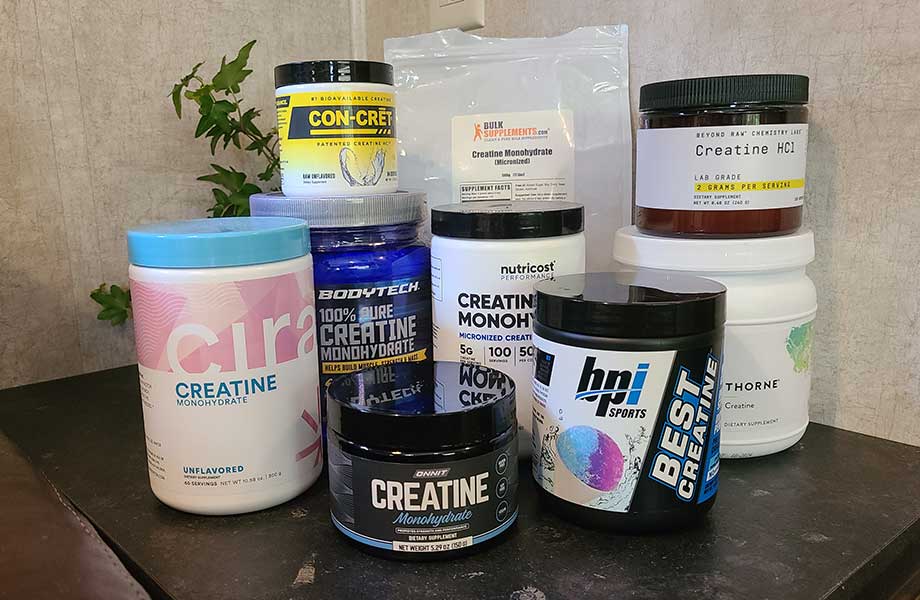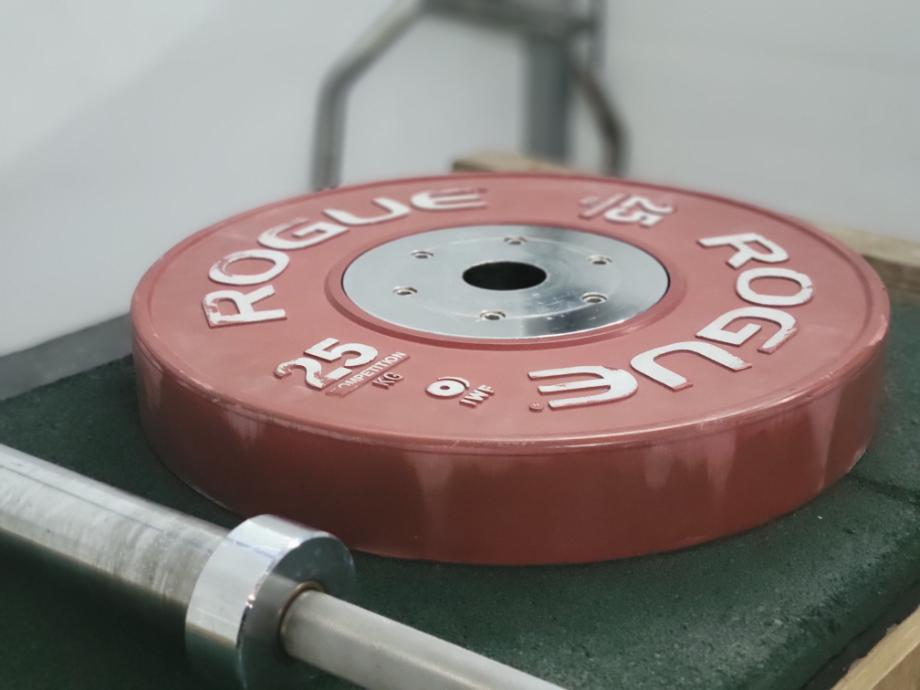If you’ve been researching creatine and its many benefits, you’ve probably heard about something called the creatine loading phase. The loading phase refers to a short period of time—a few days to a week—during which you take very high doses of creatine to saturate your muscle cells with it, where it then gets to work and helps you become a better athlete. If you’re not exactly sure how it works, don’t fret: This guide to the creatine loading phase covers everything you need to know.
Medical disclaimer: This article is intended for educational and informational purposes only. It is not intended as a substitute for medical advice. For health advice, contact a licensed healthcare provider.
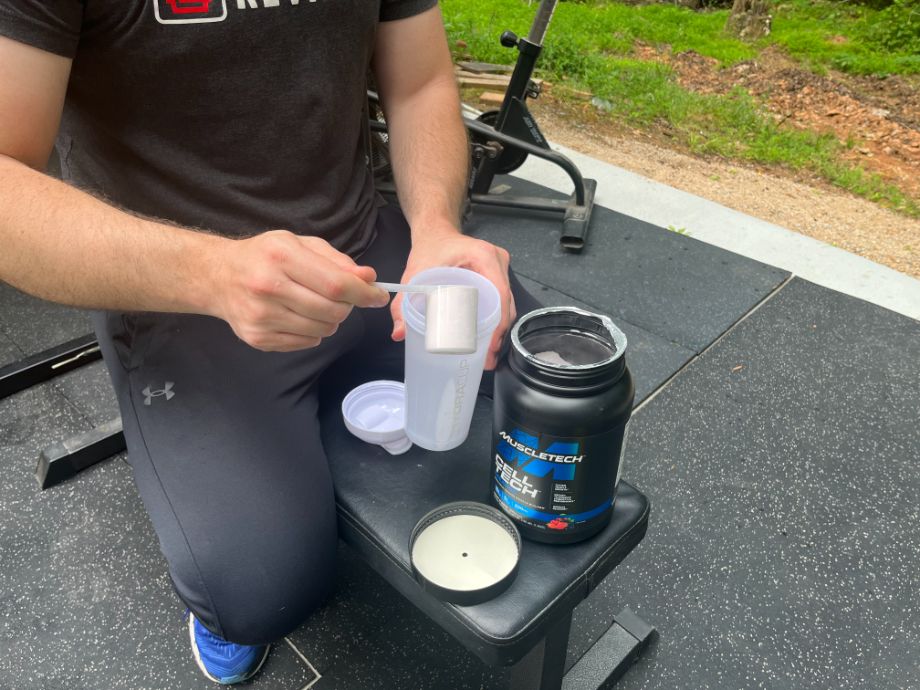
What Is Creatine?
Creatine is a chemical compound made in your body from the amino acids glycine, arginine, and methionine. It is important in the phosphocreatine energy system in the body, which uses creatine phosphate to produce adenosine triphosphate 1, or ATP.
ATP is the “energy currency” of muscle contraction. It’s especially important for short-duration, high-intensity exercise, like sprinting the 100-yard dash or maxing out your bench press for two reps.
There are several forms of creatine supplements, including creatine monohydrate, creatine HCl, creatine ethyl ester, creatine citrate, and creatine phosphate. Current dosing protocols, including the creatine loading phase protocol, are based on research that examined creatine monohydrate.
RELATED: Best BCAA Supplements
Creatine Dose Recommendations
The generally agreed-upon daily intake recommendation for creatine is 3 to 5 grams of creatine monohydrate per day, according to a 2021 meta-analysis in the Journal of the International Society of Sports Nutrition 2.
This is the clinically indicated minimum that, based on decades of research3, is shown to result in the well-known benefits of creatine, including enhanced athletic performance, muscle growth, increased muscle strength, and more.
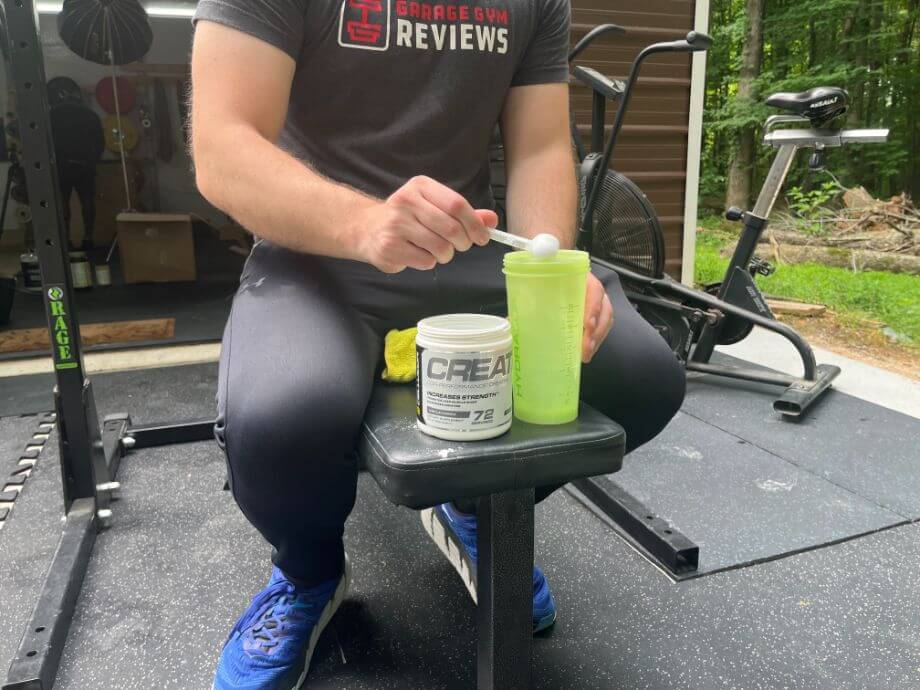
That recommendation is for a maintenance dose that, after a few weeks of supplementation, will result in complete saturation of creatine stores in the skeletal muscle.
Creatine Loading Research
We asked expert contributor Sharon Lehman, RD, to walk us through past and current research on creatine loading. She shared that research shows creatine loading increases muscular stores of creatine by about 20%, but so does taking smaller doses of creatine. The difference is how quickly it happens.
Numerous studies4 have compared groups of people loading creatine to those taking a single 3 to 5-gram dose of creatine per day. Groups who loaded saturated their muscle stores within a few days, while the smaller dose took about 28 days, or four weeks, to reach the same level.
A 2021 review5 examined the results of 16 studies on the use of creatine in older adults. There was no difference between groups who loaded creatine and those who started with a maintenance dose. All older adults who combined creatine with resistance training had increases in lean muscle mass and strength.
Researchers have also noted side effects most likely occur with creatine loading than smaller doses. The most common loading side effect is water retention6, but it’s typically only a couple of pounds due to creatine pulling water into muscles. Some people also experience digestive upset1, like nausea and diarrhea, when they load creatine.
The bottom line: Creatine loading isn’t necessary, and any benefits associated with loading are temporary since you’ll eventually get the same results with a maintenance dose.
How To Creatine Load
A creatine loading protocol is an attempt to increase the amount of creatine in your muscle cells much faster, and it requires upping your creatine intake to multiple servings per day.
During the loading phase, you’ll take 20 to 25 grams of creatine per day for the five to seven days. You’ll split this large daily dose into four or five equal doses throughout the day to help manage potential side effects of high doses of creatine, such as bloating.
After the first week is done, you’ll switch to a lower dose of 3 to 5 grams per day, taken all at once.
Is The Creatine Loading Phase Necessary?
No, a creatine loading phase is not necessary to reap the many fitness and health benefits of creatine, but the loading phase will saturate your muscle stores of creatine much faster compared to not completing a loading phase2.
If you follow the clinically recommended creatine loading protocol as described above, you can fully saturate your muscle stores of creatine in a short-term period of five to seven days. Then, you can continue with the maintenance dose for as long as you’d like.
“Personally, when I started using creatine, I skipped loading and took a maintenance dose of 5 grams per day. I wanted the health benefits creatine has to offer, but I’m a busy mom who exercises at home. Since I’m not training for competition or trying to max out, there wasn’t a real need to speed up results,” shares Sharon Lehman, RD.
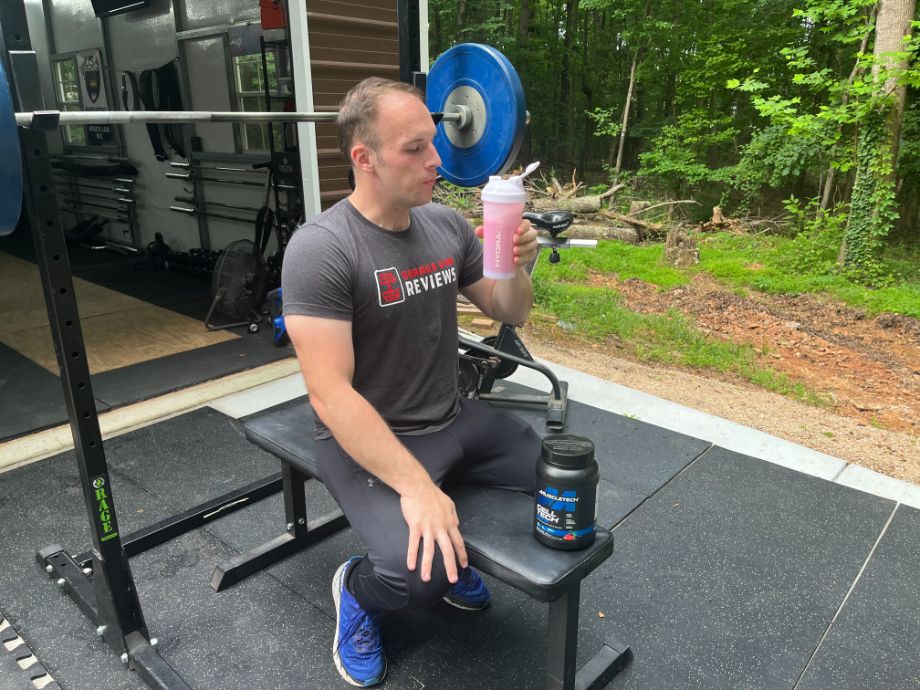
If you choose to skip the loading phase and start with the maintenance dose, it will take about a month to six weeks to saturate creatine muscle stores2, depending on factors such as your current creatine levels, body size, biological sex, lean muscle mass, the exact dose you are taking, and diet, specifically meat and seafood consumption.
Don’t forget that to maintain muscle stores of creatine beyond what is possible with just diet, creatine supplementation must be an ongoing effort for the long term.
Who Should Do a Creatine Loading Phase?
Anyone who’s interested in increasing muscle creatine stores to build muscle or improve workout performance can benefit from a creatine loading phase and then regular creatine maintenance after that.
Those who are very prone to bloating or digestive issues may want to skip the loading phase and start with the maintenance dose. In some people, creatine can cause bloating due to water retention, cramping, or diarrhea when taken in very high doses.
RELATED: Can You Dry Scoop Creatine?
Creatine Side Effects
Speaking of bloating, diarrhea, and other digestive upset, potential side effects like these may determine how (or if) you attempt creatine loading. We cover this in our comprehensive guide to creatine side effects.
Creatine Loading Phase: Final Thoughts
Completing a creatine loading phase can saturate skeletal muscle creatine stores in as little as five days. It’s a quicker way to start experiencing the benefits of creatine associated with improved workout performance, such as increased muscle mass, strength, power, and muscular endurance. You don’t need to do a loading phase, but it will take longer to fully saturate the muscles with creatine if you use the maintenance dose.
Our Experts Who Contributed To This Article
Creatine Loading Phase: FAQs
What are the benefits of creatine supplementation?
The main positive effects of creatine supplementation include improved exercise performance, specifically during resistance training and high-intensity exercise. For that reason, this supplement is popular in the weightlifting, bodybuilding, powerlifting, and CrossFit communities. Taking creatine may also help change your body composition by reducing body fat and increasing lean mass, which you can learn more about in our guide to how creatine affects weight loss.
What are the side effects of creatine?
In some people, creatine supplementation can cause bloating from water retention, which many people mistake as weight gain. If you do gain weight when taking creatine, it’s more likely muscle gains and not increased fat mass. You may have heard that creatine causes hair loss, too, but our research into the matter didn’t turn up any real supporting evidence.
Does creatine dehydrate you?
One common claim about creatine is that it causes dehydration. Sharon Lehman, registered dietitian nutritionist, debunks this claim in our guide, “How Much Water Should You Drink With Creatine?” You’ll need to drink more water than usual if you take creatine because part of the supplement’s job is to pull water into the muscles.
“Creatine itself doesn’t cause dehydration, but not drinking enough water while you’re taking creatine can result in changes to total body water and hydration status,” Lehman wrote. “Signs you’re not getting enough water include increased dry mouth, thirst, muscle cramps, headache, and dark-colored urine.”
What is a good loading phase for creatine?
We asked Sharon Lehman, RD, for the following advice on how to program a creatine loading phase.
The evidence-based dosage for loading creatine is 20 to 25 grams of creatine per day for five to seven days. The total dosage should be broken down into four or five 5-gram servings spaced throughout the day.
Here’s a sample loading schedule:
– 8AM: 5 g creatine taken with breakfast
– 12PM: 5 g creatine taken with lunch
– 4PM: 5 g creatine taken with a snack
– 8PM: 5 g creatine taken before bed
Be sure to thoroughly dissolve each 5-gram serving in 8-ounces of water. Pairing each dose of creatine with a meal or snack that contains carbohydrates can enhance creatine absorption.
After five to seven days of loading, switch to a single maintenance dose of 5 grams per day.
These statements have not been evaluated by the Food and Drug Administration. This product is not intended to diagnose, treat, cure, or prevent any diseases.
References
- Dunn J, Grider MH. Physiology, Adenosine Triphosphate. [Updated 2023 Feb 13]. In: StatPearls [Internet]. Treasure Island (FL): StatPearls Publishing; 2023 Jan-. Available from: https://www.ncbi.nlm.nih.gov/books/NBK553175/
- Antonio, J., Candow, D.G., Forbes, S.C. et al. Common questions and misconceptions about creatine supplementation: what does the scientific evidence really show?. J Int Soc Sports Nutr 18, 13 (2021). https://doi.org/10.1186/s12970-021-00412-w
- Naderi A, de Oliveira EP, Ziegenfuss TN, Willems MT. Timing, Optimal Dose and Intake Duration of Dietary Supplements with Evidence-Based Use in Sports Nutrition. J Exerc Nutrition Biochem. 2016;20(4):1-12. doi:10.20463/jenb.2016.0031
- Antonio J, Candow DG, Forbes SC, et al. Common questions and misconceptions about creatine supplementation: what does the scientific evidence really show?. J Int Soc Sports Nutr. 2021;18(1):13. Published 2021 Feb 8. doi:10.1186/s12970-021-00412-w
- Forbes SC, Candow DG, Ostojic SM, Roberts MD, Chilibeck PD. Meta-Analysis Examining the Importance of Creatine Ingestion Strategies on Lean Tissue Mass and Strength in Older Adults. Nutrients. 2021;13(6):1912. Published 2021 Jun 2. doi:10.3390/nu13061912
- Naderi A, de Oliveira EP, Ziegenfuss TN, Willems MT. Timing, Optimal Dose and Intake Duration of Dietary Supplements with Evidence-Based Use in Sports Nutrition. J Exerc Nutrition Biochem. 2016;20(4):1-12. doi:10.20463/jenb.2016.0031


